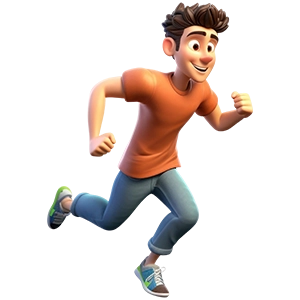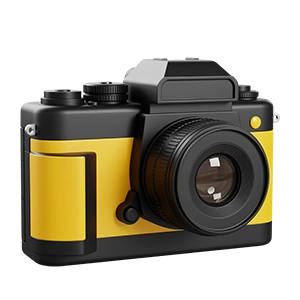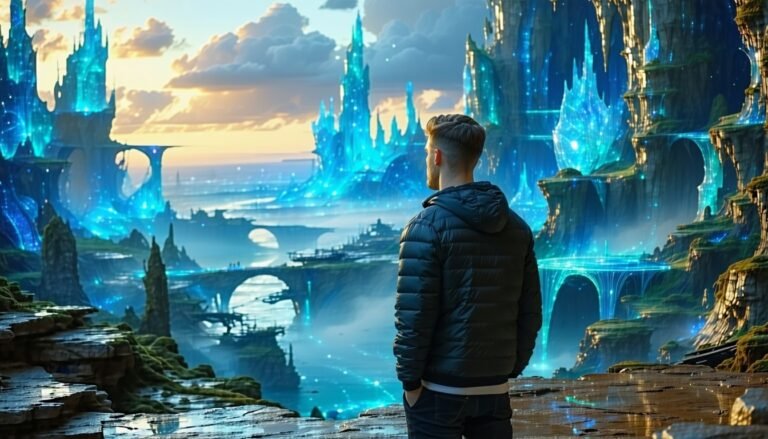Master CGI/live action compositing.
If you want to impress your viewers and make them question, “Wait, how did they do that?, then nailing CGI live-action compositing is essential. You’re blending rendered 3D elements with real-life footage, and any minor mishap can ruin the illusion. Yeah, I’ve been there too. Where your CG insert just screamed, “Look at me, I’m not there!” But this is your shot to change that. In this comprehensive guide, we’ll walk you through everything you need to create a seamless composite, from capturing the correct data on set to fine-tuning your final shot in post-production.
Build your shot foundation.
Before the first pixel of CGI is even rendered, set yourself up for success with a solid pre-production plan. Good planning goes a long way.
- Storyboards and previz
Sketch out or digitally visualize how your live footage and CG elements will interact with each other. This step helps you spot potential issues and plan camera angles. - Match camera settings
Whenever possible, replicate the specifications of your real camera in 3D. That includes focal length, sensor size, and even lens distortion. The closer you stay to physical reality, the more convincing your composite will be. - Use practical markers
If you’re tracking 3D objects, add small tracking markers in your live-action set. These provide reference points for your motion-tracking software, eliminating guesswork and ensuring stable CG props.
For a deeper look at capturing the right footage, consider the intersection of CGI/live-action filmmaking. It’s full of tips on how to shoot with your composite in mind from day one.
Match lighting and color
Lighting mismatches are often the biggest “tell” in a composite. One moment, you’re seeing a sunny day, and the next, the CG character looks lit by a basement bulb. Avoid that jarring disconnect with a consistent lighting strategy.
- Gather light reference
Use a gray or chrome sphere on set to record lighting conditions. Then replicate those lighting cues in your 3D scene. It’s a tried-and-true technique for capturing highlights, shadows, and color balance. - Maintain color consistency
Shoot with a consistent white balance and ensure that your 3D renders match the color profile of our live footage.. If the final composite appears washed out or too vibrant, gently adjust the hue, saturation, and gamma until everything blends naturally. - Don’t forget shadows.
Your scene might look polished until you realize your CG character is missing a shadow. Incorporate shadow-catcher objects in 3D, or add subtle shadows in compositing to lock your CG into the environment.
Refine integration details
Bringing your CG elements into live-action footage involves more than just color-matching. It’s about depth, motion, and little touches that sell the realism.
Leverage the camera solves
A precise camera track ensures that your CG objects or characters move exactly as the real camera does. You’ll avoid “slipping” or “drifting,” which can happen when your 3D and live-action elements are out of sync.
- Triple-check your track
Clear markers, stable footage, and checking for lens distortion can increase your track’s accuracy. If something feels off, track it again or refine your points. The extra effort saves massive headaches later.
Add subtle motion blur.
CG renders often come out razor-sharp, but real-world cameras introduce motion blur. Applying the right amount of directional blur makes CG objects feel more organic, especially in fast-paced shots.
Integrate with environmental effects.CGI
Does your live-action plate have dust, fog, or raindrops? Layer your CG behind or inside these elements. Even a simple overlay can turn a “flat” CG shot into something immersive. Take a look at seamless CGI/live-action transitions for more tips on blending CG elements into challenging environments.
Polish final composites
Once your major elements are in place, it’s time to refine the details. This is where you go from “pretty good” to “whoa, that’s legit.”
- Multi-pass compositing
Export different render passes (e.g., diffuse, specular, shadow) and composite them individually to create a composite image. You’ll have finer control over reflections, highlights, and color tweaks, rather than being stuck with a single flattened image. - Light wrap
Give your CG elements a subtle glow from the real background by adding a light wrap. It helps blend edges, so your CG doesn’t look like it was cut out with scissors. - Noise and grain
Real cameras introduce noise or grain, especially in darker areas. Your CG is rendered “clean,” so adding matching grain can unify the overall image.
If you need more guidance on bringing everything together, head to CGI/live action post-production. It covers advanced compositing techniques for pulling your final look together.
Final checks and iterative improvements
It might be tempting to call it done once you see your CG in the frame, but a few extra passes can make a world of difference.
- Look at it with fresh eyes.
Step away for a moment and watch your composite again. Does anything jump out as off-balance, too bright, or oddly timed? - Ask for feedback
Show a friend, a colleague, or your friendly neighborhood artist. An outside perspective often spots subtle issues you might have overlooked. - Refine, refine, refine
Tw.eak the matte edges, revisit color grading, or redo a small shadow. These details turn a “meh” shot into a “whoa, that’s awesome” moment. And if you want more tips on building immersive illusions, check out CG live-action visual effects.
Compositing is more than just matching pixels. It’s about storytelling, emotion, and letting your audience believe your CG creation truly belongs in the filmed world. By planning your shots, matching lighting, refining details, and polishing your blend, you’ll get the kind of seamless results that make people ask, “Wait, that was CG?” That’s when you know you’ve mastered CG live-action compositing. Now, CG Make something is jaw-dropping. Good luck out there!
FAQS – Frequently Asked Questions
What is CGI/Live Action Compositing?
CGI/Live Action Compositing is the process of blending computer-generated imagery seamlessly into real-world footage to create unified final shots.
Why is CGI/Live Action Compositing important?
CGI/Live Action Compositing is critical for ensuring that digital elements match perspective, lighting, and movement in live footage.
Which software is used for CGI/Live Action Compositing?
Popular tools for CGI/Live Action Compositing include Nuke, After Effects, Fusion, and Blender’s compositor.
What skills are needed for CGI/Live Action Compositing?
CGI/Live Action Compositing requires knowledge of masking, match-moving, color correction, and layered compositing techniques.
How does CGI/Live Action Compositing work?
CGI/Live Action Compositing works by aligning and blending CGI layers onto live footage using tracking, color matching, and depth layering.
What is match-moving in CGI/Live Action Compositing?
Match-moving in CGI/Live Action Compositing tracks camera motion to align CGI layers accurately with live-action shots.
Is CGI/Live Action Compositing used in films?
Yes, CGI/Live Action Compositing is extensively used in feature films, TV, and commercials to enhance or create scenes.
Can beginners learn CGI/Live Action Compositing?
Absolutely—many online tutorials and courses teach the basics of CGI/Live Action Compositing with practical projects.
How long does CGI/Live Action Compositing take?
Compositing time varies—simple shots may take hours, complex scenes can take days or weeks, depending on complexity.
What is green screen compositing in CGI/Live Action?
Green screen compositing in CGI/Live Action Compositing isolates subjects using chroma keying so backgrounds can be replaced digitally.
How does lighting affect CGI/Live Action Compositing?
Matching lighting in CGI/Live Action Compositing ensures digital elements integrate naturally with the live-action environment.
What is rotoscoping for CGI/Live Action Compositing?
Rotoscoping in CGI/Live Action Compositing is tracing objects frame by frame to create accurate masks for digital integration.
Can CGI/Live Action Compositing correct film errors?
Yes, it can fix framing issues, remove unwanted objects, add effects, or enhance scenes during CGI/Live Action Compositing.
What is depth compositing in CGI/Live Action?
Depth compositing in CGI/Live Action Compositing uses depth maps to manage occlusion, fog, and depth-of-field effects.
What role does color grading play in CGI/Live Action Compositing?
Color grading in CGI/Live Action Compositing ensures that CGI and live footage share consistent tone and mood.
Can real-time engines assist in CGI/Live Action Compositing?
Yes, Unreal Engine and Unity can be used for real-time CGI/Live Action Compositing, speeding up previews and integration.
What are common mistakes in CGI/Live Action Compositing?
Common mistakes include mismatched lighting, poor tracking, uneven color matching, and incorrect scale.
Is CGI/Live Action Compositing used in commercials?
Yes, CGI/Live Action Compositing is widely used in commercials to enhance products, create backgrounds, or add effects.
How does CGI/Live Action Compositing impact storytelling?
CGI/Live Action Compositing enhances storytelling by enabling directors to visualize imaginative scenes grounded in reality.
What is multi-layer compositing in CGI/Live Action?
Multi-layer compositing in CGI/Live Action Compositing involves combining multiple passes—like shadows, highlights, and effects—into a single shot.
Where can I learn CGI/Live Action Compositing?
You can learn CGI/Live Action Compositing via online platforms like FXPHD, Coursera, educational VFX sites, or film school courses.













